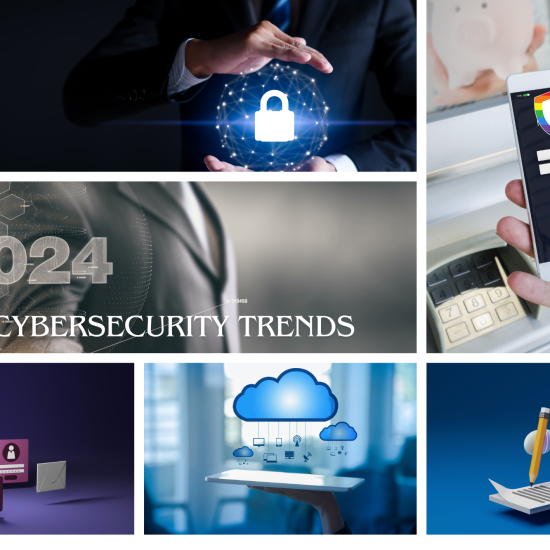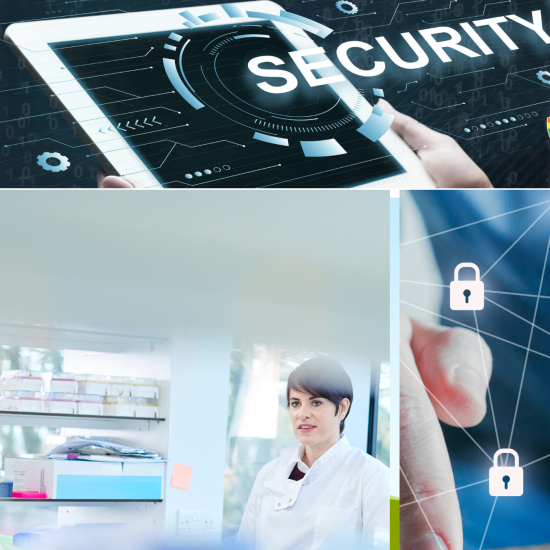Adaptive Authentication: The Solution to Today’s Flexible Business Models and Security Threats
Modern companies are more flexible than ever before when it comes to employee technology use, with remote and hybrid work models being widely adopted. This has resulted in increased productivity and versatility, but it has also left devices and networks vulnerable to cyber threats.
To counteract this, adaptive authentication has emerged as a critical solution. Rather than relying on inflexible policies that are enforced on every device and user, this method employs authentication and authorization levels based on user role, location, device status, and behavior.
In today’s digital environment, one-size-fits-all IT security is no longer applicable. With adaptive authentication, companies can strike a balance between maintaining security and allowing for user flexibility.
In this article, you will read about:
Comprehending Adaptive Authentication: Implementing a Risk-Based Technique
The Significance of Adaptive Authentication for Organizations
Enhance Security and Flexibility with Intelligent Adaptive Authentication
How can Rainbow Secure help?
Authentication methods such as Multi-Factor Authentication (MFA) require users to input specific credentials when logging in or accessing corporate resources. However, these standard methods make users vulnerable to cyberattacks, since cybercriminals can easily acquire or hack their various credentials.
Adaptive Authentication serves as a solution to this problem. This approach alters the required credentials depending on the situation, which enhances security when the risk of breach is higher.
Comprehending Adaptive Authentication: Implementing a Risk-Based Technique
The process of adaptive authentication involves a risk-based approach, with a primary system, known as the risk engine, that continuously evaluates the authentication mechanism required for each user. The risk engine considers factors such as location, device posture and user risk profile to determine the level of authorization a user should have to different applications and assesses this throughout the user session, not just during login.
The fundamental objective of the adaptive authentication engine is to guarantee that only authorized and productive users can access the system, app, or network resource. The engine uses various factors in real-time to analyze user sessions and identify any elevated risk, enabling administrators to configure policies that define the level of access to grant and the authentication mechanism to use.
Depending on the risk score, a range of actions can be taken. For example, if there’s a perceived risk based on user behavior or device type, the system can start monitoring activity. In cases of higher risk, the user may be required to confirm their identity using a multi-factor authentication (MFA) mechanism, while the system can block access altogether if the risk score is very high.
Administrators can implement granular policies as part of the adaptive authentication process. For instance, when users log in from unmanaged devices, they may be unable to access certain network features. In cases of high-risk profiles, options such as turning off USB drives or screenshot functionality can be employed to prevent the introduction of threats to the network.
The most cutting-edge adaptive authentication solutions automatically adjust the authentication requirements based on the risk score and IT policies. For low-risk users, few or no additional challenges may be required, while those with a high-risk score may need multiple challenges, such as a one-time password plus biometrics. In some cases, advanced solutions may even restrict or deny access to the user based on the risk score and IT policies.
The Significance of Adaptive Authentication for Organizations
Adaptive authentication is an integral component of the zero-trust security model that many organizations have adopted. This model involves evaluating the security status of users and their devices before granting access to corporate data or network resources, rather than simply relying on the correct login credentials. Considering the numerous security threats that companies face today, implementing a zero-trust strategy is imperative for all businesses. Threats can come from different sources, such as spear-phishing attacks, compromised mobile devices, lost or stolen devices, or even compromised Wi-Fi networks in homes or businesses. Preventing any form of compromise necessitates a comprehensive security strategy.
By combining adaptive authentication with single sign-on (SSO) methods, businesses can offer secure support to their expanding hybrid workforce. This means that users can use a single set of authentication credentials to access all corporate applications.
Enhance Security and Flexibility with Intelligent Adaptive Authentication
Businesses can leverage access control methods powered by intelligent adaptive authentication to grant access to a wide range of systems, tools, apps, and solutions. With the proper authentication controls, administrators can effectively set policies for accessing apps and determine the operations available to users. For instance, administrators can restrict copy/paste, printing, and downloads, or add a watermark to a web application based on current authentication factors.
Virtual applications or virtual desktops can deliver a complete remote experience to both remote and hybrid workforces, including access to all mission-critical systems that employees would otherwise only have access to if they were physically present in the office. By utilizing adaptive authentication, these remote experiences are now more flexible and user-friendly than ever before, allowing businesses to become more agile while still keeping a close eye on each session’s security risk level.
As companies rely increasingly on cloud-hosted software-as-a-service (SaaS) applications, adaptive authentication can play a critical role in defending these essential software tools against unauthorized use. Today’s security solutions are delivered as cloud services, making them an ideal match for remote and hybrid workforces. These solutions can integrate with all business systems and applications, whether they are SaaS apps or on-premises software accessed through a virtual desktop model.
Adaptive authentication enhances security and streamlines user experience. Conventional MFA imposes login requirements that can be inconvenient for users. For instance, users may have to provide a name, password, and a code from an app, or answer a security question when authenticating outside the office.
Adaptive authentication requests less information from users who are recognized and behaving in expected ways. It only prompts users for additional information on rare occasions when conditions indicate a higher security risk. This translates to fewer disruptions for users, reduced barriers to entry, and increased security.
How can Rainbow Secure help?
Right amount of data and system access to right person or role at right time is the key to organizations being able to use digital tools and platforms to serve the customer base and stay compliant.
Next Generation Rainbow Secure platform is a modern identity authentication (MFA) and single sign- on (SSO) solution for your business across on-premises and cloud environments. It’s backed by an experienced team of cloud and security experts, years of innovation, and partnerships with leading cloud platforms. Rainbow Secure is a Leader in Smart and Secure Digital Solutions that work for you.
Adaptive MFA: Empowers administrators to establish MFA policies tailored to various scenarios and usage situations.
- Configure restrictions based on IP address, device signature, geo location, and time parameters.
- Achieve comprehensive security for website, Email, SaaS and legacy applications.
- Utilize strong MFA methods, including formatting and OTP over phone/SMS, for enhanced security.
Insider Threats: Rainbow Secure assists in mitigating insider threats by implementing access controls, user monitoring, and privilege management solutions. Also, if the user leaves behind unlocked devices, saved passwords in the password manager or browser can be misused by malicious insiders. Interactive login security from Rainbow Secure helps prevents unauthorized access and protects against data theft or misuse by privileged users.
ChatGPT Security for business: Secure your ChatGPT login and Data with Rainbow Secure MFA Plugin.
Secure AI Integration: Consult Rainbow Secure Team to integrate AI in your business workflows powered by Azure and Rainbow Secure API.
Secure Workforce & Customer login: Use Authentication Plug-in by Rainbow Secure to secure workforce and customer logins. In this plug-in, you get a multi-dimensional password, passwordless login solutions with AI monitoring, Risk Analytics, and location fencing.
IoT Friendly Security: IoT platform developers can secure their cloud endpoints, and user logins (both admin and customer) against unauthorized access and scripted malware attacks using easy to adapt and support multi-layer interactive rainbow secure authentication solutions and services that includes but not limited to security assessment, API Security, secure user onboarding, and risk analytics.
Secure Data and its Backups We provide Cloud based data vault and data archive solutions backed by Microsoft Azure and secured by our authentication plugin and industry best practices to give you ransomware protection, help with data governance and disaster mitigation.
Database Security We provide technical consulting services to Secure Databases in cloud and on premise. You get best protection for your data in databases using native and third-party security tools.
Meet Compliance Requirements: Use Authentication Plug-in by Rainbow Secure with your business application and in SSO (Single Sign-on) and meet industry standards and compliance regulations such as NIST, ISO, FTC, SOX, SOC2, CMMC, CMMI, HIPAA, PCI, and others.
Securely communicate and Collaborate: Use Secure Business Email by Rainbow Secure and get protection against account takeover, phishing, ransomware, and automated login cyber frauds. In this email, you get options to send encrypted emails, single sign-on with Office 365, and Google, and 1 TB one drive storage.
Connect Business applications: Get one unified login using Rainbow Secure Single Sign-On
Manage User Onboarding / Offboarding using Rainbow Secure IAM
Verify User using Smart Multi-factor MFA. Smart Multi-Factor Authentication from Rainbow Secure which adjusts to your use case, reduces the cyber liabilities of a business from stolen credentials and improves productivity, and enhances user experience.
Do you have more questions about how Rainbow Secure innovative solutions help transform you enhance your IoT security posture and safeguard your business? Contact us today. Email us at Hello@rainbowsecure.com







